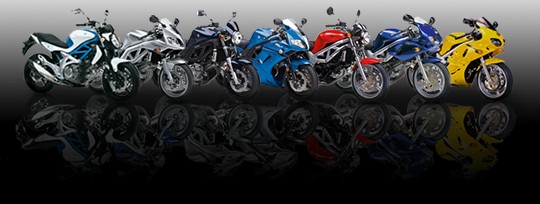 |
 |
Idle Banter For non SV and non bike related chat (and the odd bit of humour - but if any post isn't suitable it'll get deleted real quick). There's also a "U" rating so please respect this. Newbies can also say "hello" here too. There's also a "U" rating so please respect this. Newbies can also say "hello" here too. |
 |
|
|
Thread Tools |
|
|
#91 |
|
Member
Mega Poster
Join Date: Aug 2005
Location: Tower Hamlets but with Shutters on the windows
Posts: 1,522
|
cmsd2, not sure I agree there, I think compositional wise the photo is following the rule of thirds and draws the eye nicely to the busy roads.
The clouds are a bit noisy IMHO I think perhaps you might have afforded to go down to ISO 100 and see if you could get away with that. The clouds obviously wont be in complete focus as you have a 25s exposure and they are obviously moving fast. Although I am sure someone with more knowledge will be along shortly to give better advice... EDIT : opps I am sorry I have just been informed that your D90 base ISO is 200 my D60 base ISO is 100. Last edited by anna; 07-01-10 at 06:42 PM. |
|
|

|
|
|
#92 | |
|
Guest
Posts: n/a
|
Quote:
The camera movement can only be solved by bracing the camera as hard as possible, and that includes a good tripod + head combination (read: heavy or expensive), and adding even more weight to it, while taking off everything the wind might catch on and induce vibration. Oh, and turn off VR if your lens has it! The other thing I'd do to the picture would be to set the white balance to tungsten lighting, or even colder than that (on camera if you shot jpeg, in software if you shot raw). Human eyes easily adapt to light colour changes, cameras don't, hence the yellow-ish tint and grey skies. Dial the white balance back to tungsten and everything starts falling into place... |
|

|
|
|
#93 |
|
Guest
Posts: n/a
|
Here's a sample of what could be done with the white balance setting (the .jpg file doesn't allow as much tweaking latitude as a .nef file straight from the camera, hence the funny banding that can be seen in some colour transitions). This is slightly exaggerated just to show you the very different mood you can get just by tweaking the white balance setting:

|

|
|
|
#94 |
|
Super Moderator
Mega Poster
Join Date: Dec 2003
Location: Somerset
Posts: 3,614
|
Mr Philly Pie, can you explain what white balance does / is. Tis another setting on the DSLR I dont really "Get"...
is it something I can use to try and get rid of that organgey glow effect you get in snow from the street lights at night ?
__________________
Look Dave, I can see you're really upset about this. I honestly think you ought to sit down calmly, take a stress pill, and think things over. K5 GSXR 750 Anniversary Edition |
|
|

|
|
|
#95 | |
|
Guest
Posts: n/a
|
Quote:
|
|

|
|
|
#96 |
|
Super Moderator
Mega Poster
Join Date: Dec 2003
Location: Somerset
Posts: 3,614
|
Cool thankyou. Dont go to to much trouble I dont want a mega shin kicking off of Anna next time I see her
__________________
Look Dave, I can see you're really upset about this. I honestly think you ought to sit down calmly, take a stress pill, and think things over. K5 GSXR 750 Anniversary Edition |
|
|

|
|
|
#97 |
|
Member
Mega Poster
Join Date: Aug 2005
Location: Tower Hamlets but with Shutters on the windows
Posts: 1,522
|
White balance basically allows you to adjust your camera to ensure that it has the correct settings for the light that you are shooting in
|
|
|

|
|
|
#98 |
|
Member
Join Date: Jun 2007
Location: South West London
Posts: 531
|
Ah, now I see what white balance does... thanks.
I have also learnt a lesson about shooting in RAW and processint the image in PS (or whatever) in case one doesn't get it right on the camera. For this shot, I turned the Long Exposure Noise Reduction ON (added 20s to the processing time). The first one is the JPEG that the camera produced on shooting, the second is the RAW image that I adjusted in gimp. The white balance on the camera was set to tungsten, although, for this shot I dont think it was as critical as the one posted above. And yes, I realise I havent got he blue quite correct for the raw one - it's a bit sharp, but it is such a contrasting color in the shot.   EDIT: This is the RAW image that I processed on the Camera - looks quite good to me. 
Last edited by mr.anderson; 08-01-10 at 07:18 PM. |
|
|

|
|
|
#99 | |
|
Guest
Posts: n/a
|
Quote:
Okay, boring explanation coming up.  As everybody has probably heard sometime before in a boring class or TV show (before falling asleep, that is), different light sources have different colour temperatures. Googling a bit on light colour temperature should come out with a shedload of links about the subject, I'm not even going to try and explain colour theory, that would be a thread on its own. What I will try is to quickly explain how this affects photographers. Light a candle, for instance, and observe a piece of white paper lit under that light. Your brain knows it's white (because you've seen it before in daylight, our "reference"), but in reality your eyes are seeing it as yellow / orange-ish, colours perceived by the human brains as being warm. Now take the same piece of paper, go outside (when it stops snowing, that is!, a sunny day would be ideal for this Well, the camera lacks this "automatic" colour conversion ability, and will record the white paper as yellow under candle-light, or blue in a shady spot. Unless the person pushing the buttons tells it what light source it's shooting under, that is. Hence the "White Balance" setting. It's what will allow the neutral colours to show up as neutral, without any colour casts. In the days of old, a.k.a. film, you'd do this by putting colour correction/conversion filters in front of the lens (or using films balanced for different light temperatures). With digital cameras it's much easier to just tell the camera to use different presets for the different light sources. Of course the nice gentlemen at the camera factories are always trying to make our lives easier, so they include an "Automatic White Balance" (AWB) setting, that'll do its best to try and compensate for the different light sources. But just like automatic exposure, it's a "blind" guess by judging the colours of the scene and averaging them out. If your scene is varied, close to daylight and includes a white object, it might work. If it's mainly cool or warm colours, it will warm it up or cool it down. If it's fluorescent lighting, all bets are off! Sunsets are one of the best examples for this: the camera will see bold warm colours all around and will compensate for this by cooling everything down. Then you get home and go "where have my beautiful colours gone?!" (tip: shade white balance and a smidge of underexposure here are your friends, just -0.7 to -1.0 stops. Just don't expect to see anything in the shadows afterwards!). The one exception where AWB might be your best friend is under multiple light sources with different temperatures: its guess might be better than yours. As usual, try it. Set the camera on the sunlight white balance (you'll have to be any in one of the PSAM exposure modes or it might not allow you to get out of AWB) and shoot a piece of paper by candle light, sunlight and shade. Compare the 3 pics and you'll see the difference. Repeat the experience, this time with the camera on tungsten white balance (bulb symbol) for the candle, sunlight (for sunlight, obviously) and shade white balance (the house with the shaded area symbol) for the shade. Even with the tungsten white balance still being "colder" than the candle, the paper will look a lot less yellow now. Okay, by now you should realise the importance of setting the right white balance before shooting. This is even more important if you're shooting straight to jpg, because this kind of file doesn't allow you a lot of adjustment range after the fact before starting to break up the colours. If you're shooting raw (.nef for Nikon, .crw for canon), you can freely adjust your white balance after shooting, when opening the pics in the conversion software. |
|

|
|
|
#100 | |||
|
Guest
Posts: n/a
|
Quote:
Quote:
Quote:
Last edited by Filipe M.; 08-01-10 at 10:39 AM. Reason: rewording after engaging brains |
|||

|
 |
|
|
 Similar Threads
Similar Threads
|
||||
| Thread | Thread Starter | Forum | Replies | Last Post |
| CV Examples | gruntygiggles | Idle Banter | 5 | 24-09-09 04:16 PM |
| AR Photography | Gordon B | 2008 Annual Rideout | 12 | 30-06-08 08:42 AM |
| Examples of k8 Colours please? | Griffo | Photos | 12 | 17-05-08 07:07 PM |
| Photography Kit | southy1978 | Idle Banter | 0 | 19-02-08 11:19 PM |
| Photography | localhost | Idle Banter | 16 | 22-01-06 07:59 PM |